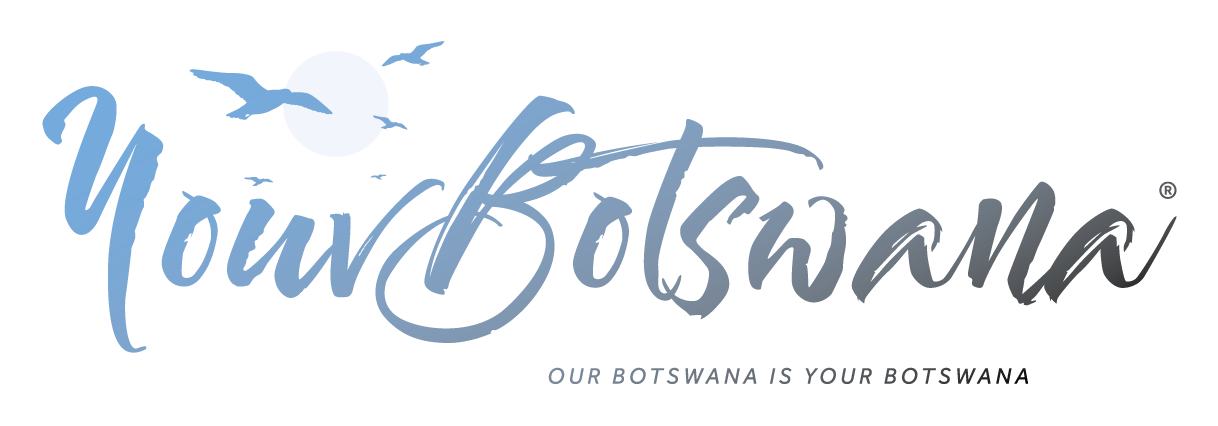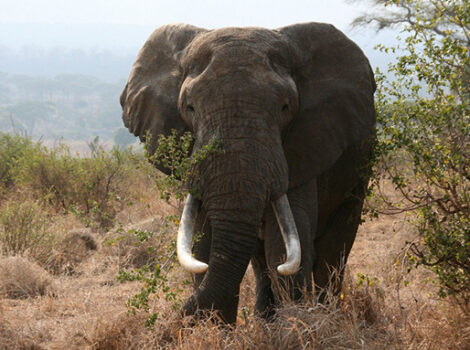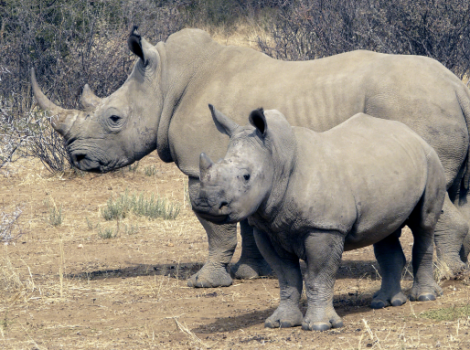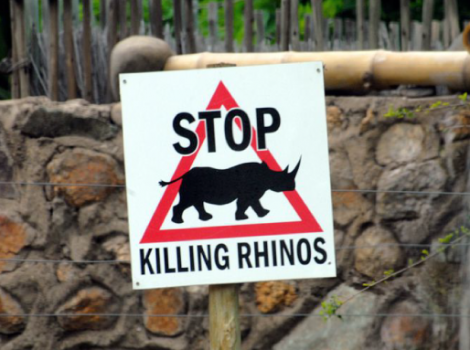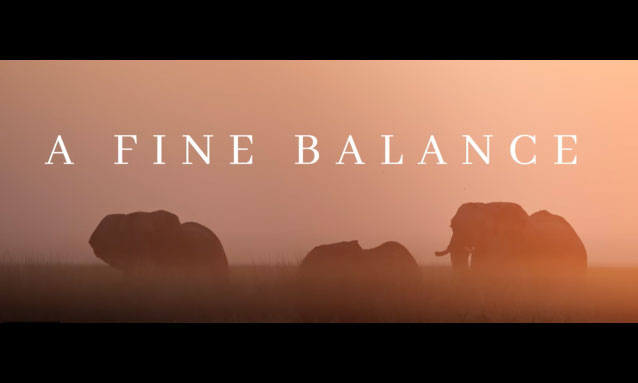
27 April 2025
A new documentary explores the thorny issue of elephant hunting in Botswana, giving voice to the rural poor who are often voiceless in the polarising debates around such issues.
In 2014, former Botswana president Ian Khama banned elephant hunting. The measure, imposed the year before Cecil the Lion’s demise in neighbouring Zimbabwe put African trophy hunting firmly in the crosshairs of Western public opinion, was lauded by animal welfare organisations.
Botswana has an elephant population of about 130,000 by most estimates and trophy hunting was not a threat to the species’ survival in the country. But it was a source of income and meat for poor rural communities that had to actually share their living space – including their fields for crops and livestock grazing and water sources – with the world’s largest living land mammal.
Their voices are heard in a short but insightful and vividly shot documentary, A Fine Balance: A Botswana Elephant Documentary, released on 22 April.
“Animals are now roaming the streets, and we are basically ploughing for the elephants,” Anthony Karabo, a resident of the remote Sankuyo village, says through a translator.
The documentary is a product of Blood Origins, a nonprofit “whose mission is to convey the truth about hunting and promote conservation efforts.”
That will be a red flag to some. But the Humane Society and other animal welfare NGOs also make documentaries in pursuit of an agenda and they all contribute to the complex debates around wildlife and conservation issues.
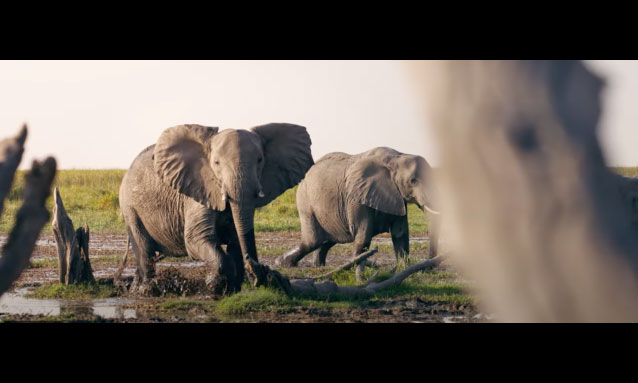
And in the case of this Blood Origins documentary, it is rural Batswana – the people whose views on Botswana’s elephants should have the most weight but are seldom considered – who are the subject matter. The narrative spun by the authorities when the ban was imposed was that photographic tourism – which does generate income and jobs in some regions of Botswana such as the Okavango Delta – would replace the revenue and employment that had flowed from hunting.
“Money would continue to come into the trusts to support the local communities. All the good things would happen,” says narrator Robbie Kroger.
That scenario was a mirage as most of Botswana’s hunting concessions are unsuitable for game viewing because of their remoteness, lack of amenities, relatively dull landscapes and dearth of the teeming herds of visible game that are the magnets for the photographic crowd.
In 2019, Khama’s successor, Mokgweetsi Masisi, lifted the ban in response to the demands of rural communities and the new government has not reimposed it. Against the backdrop of a renewed push by the UK government – with broad bipartisan support – to ban the import of hunting trophies, this documentary is a timely reminder that while much of the British public backs the initiative, Africans do not.
The documentary takes viewers to Sepako village where the locals gather water by bucket from a watering hole in the sand.
“… over the past few years, there has been a lot of conflict with the elephants. When there is no water anywhere else, they come here. The residents of the village end up spending the night here guarding the water,” Chief Joseph Ramaditse says.
“Because when the elephants come they destroy everything and then bury it (the water). Then the cows end up with no water to drink.”
While gathering water, one young lady says the community is afraid of the elephants “because they pose a danger to our lives”. Elephants and buffalo are a constant presence and menace in the village, with spoor seen right next to houses and people afraid to walk after dark. People have given up farming because of the damage that the big critters inflict on their crops.
Isaac Tshwaane was killed by an elephant in the area, and his daughter Kelebeletse Paolosi says the animals “destroy people’s lives”. Amid this conflict, the consensus among the rural inhabitants is that hunting is essential.
“The years 2014 to 2018 (when the ban was in place) were very difficult years for us. And then, the current president opened hunting again… and life has changed for the better,” says Timex Moalosi, the chief of Sankuyo village.
At another village where hunting and photographic tourism both take place in the area, Tuelo Kebuelemang, a board member of the Mababe Trust, says the coffers would be bare without hunting.
“Hunting is the one that pays money into the trust. So if hunting stops, no money goes into the trust,” she says.
Kroger and his crew also visit a massive hunting concession known as NG13 where the hunting of a big tusker in 2022 sparked a wave of Western outrage which echoed the furore over Cecil the Lion. That led to calls for hunting to be banned in the area and replaced with photographic safaris, prompting Kroger to go and see for himself if that was a viable option.
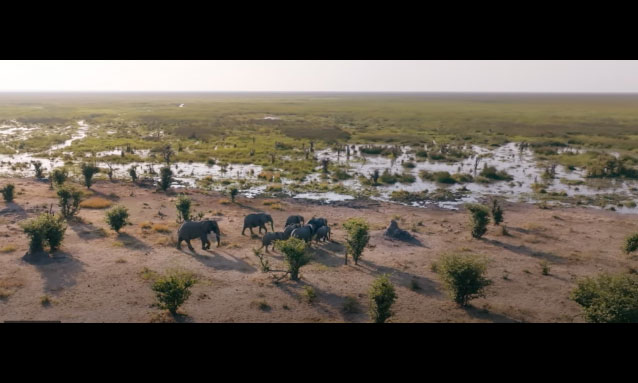
Spoiler alert: it’s not.
For one thing, it takes a long time to get there – an uncomfortable journey on rough sandy roads which one of the crew’s vehicles at one point gets stuck in. Kroger notes that during the ban on hunting, no one had expressed any interest in setting up shop in the area to offer photographic tourism.
“I’ve seen two impala,” Kroger says along the way, holding two fingers up for emphasis.
“You can try to convert this to ecotourism, sink waterholes, wildlife will come. But why would someone come here? It’s mopane raisin bushveld that has elephant, zebra, ostrich, it will then have impala, sable, roan. But you can see that anywhere.”
Leon Kachelhoffer, a hunting outfitter in NG13, says no one was interested in developing it for photographic tourism before he came long because “it’s a marginal area, it’s completely undeveloped. It doesn’t have any permanent water so the game moves out… It’s not a great site for ecotourism.”
Kroger and his crew then proceed to take a game drive over the deep sand roads and after almost 17 minutes, they catch sight of a wildebeest bull. After 45 minutes the second animal, a bull giraffe, emerges from the bush. There are animals about – there is plenty of scat and spoor – but you just do not see them, which is the point of a photographic safari.
The documentary also records the aftermath of an elephant hunt in the area – footage that many viewers will no doubt find upsetting.
“It’s fucking sad,” Kroger admits. “But then you realise what this animal is going to do, where this animal is going, the mouths that it’s going to feed. There’s 130,000 of these things in Botswana. Is it not a resource that they can use? It is, but it’s an elephant, it’s not a cow.”
Several members of the local community butcher the elephant for food – a welcome source of protein. The tusks will be mounted as a trophy in some foreign land, but the animal is not wasted. At just under 40 minutes, A Fine Balance is crisply narrated and the camerawork is superb.
One minor quibble that this reviewer has is Kroger’s use of the term “ecotourism” as a separate activity from hunting. In my view, hunting and fishing are both forms of ecotourism. Many critics will dismiss this documentary as pro-hunting propaganda and that point is fair game. But how does one dismiss the views of Botswana’s rural communities?
The animal welfare and rights narrative is almost entirely a Western construction, reflecting the views of a demographic that is overwhelmingly white, urban, educated and middle class. It is a discourse that is largely alien to rural Africa, one fashioned to advance an agenda driven by folks up north who do not have to live with the harsh reality of sharing space with elephants.
A Fine Balance has done a fine job of balancing that perspective with the one that obtains in rural Africa.
Source: https://rb.gy/t36j0o
